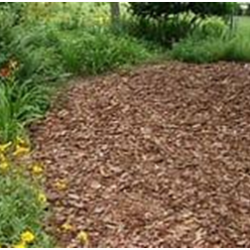How to Make Leaf Mulch
What is Leaf Mulch?
Like any mulch, it provides protection for your soil and plants. It is just a layer of leaves placed on top of your soil around your plants. Leaf mulch in your landscape will keep your beds clean, prevent weeds, and insulate tender perennials from extreme temperatures. Aside from that, the layers of leaves decompose and release important nutrients back into the soil just like in a forest floor. In addition, with the assistance of worms, fungi, and other organisms, the leaves enrich the soil.
Leaves can be used whole or shredded into small pieces; each option has pros and cons. Shredded leaves allow more water to penetrate the leaves to get to the soil, but does require more work. Un-shredded leaves make great mulch too, but they can blow away and are more bulky.

Can All Leaves Be Used to Make Mulch?
Most leaves make great mulch, but do not use green leaves as they contain higher levels of nitrogen. Do not use walnut tree leaves for mulching! They contain iodine which is toxic to some plants. It can cause slow or stunted growth, yellow leaves, and possibly kill your plants.
The best types of leaves for mulch are dried:
- Maple
- Oak
- Elm
- Beech
- Sycamore
- Birch
Now for the nitty gritty of making leaf mulch!
Making Leaf Mulch with a Lawn Mower
- Pre-mow a patch of grass This prevents grass in your mulch which creates the same problem as using green leaves.
- Place an even layer of leaves into the mowed area.
- Mow over the leaves using a grass catcher. The leaves may need to be dumped and mowed over several times to get the right consistency. Shoot for about 2 inches across. The smaller the peice the better they bind together for a more uniform layer.
Making Leaf Mulch with a String Trimmer
- Gather dried leaves in a large trash can
- Place string trimmer into the leaves to shred. Be sure to wear eye protection!
- Use the shredded leaves as mulch around your plants. Then water lightly to keep it in place.
Using leaf mulch is a wonderful way to reduce waste, save money, and improve your gardens all at the same time!






